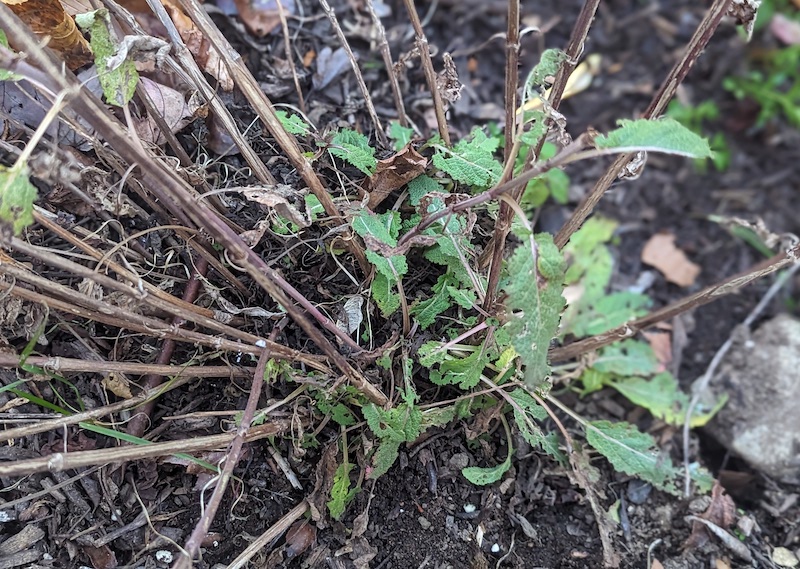Saliva are flowering herbaceous perennials that are known for being adaptable and low-maintenance. Not many problems typically impact salvia plants, although plant diseases like powdery mildew and botrytis blight can become issues. Diseases affect the health of salvia plants, stunting growth and even killing the plants if left untreated. Powdery mildew and botrytis blight can spread through a mixed bed or yard, causing a lot of damage, so early detection, treatment, and prevention are vital.

Salvia Powdery Mildew
Powdery mildew is often associated with plants with large leaves, but this fungal disease can live and thrive on the smaller leaves of salvia. Powdery mildew occurs when plants are grown too close together in damp conditions. The fungus thrives on moist leaves with limited airflow. Infected leaves will die, resulting in stunted growth and possibly even death of the plant.
Identifying Powdery Mildew
Powdery mildew looks like white or light gray spots on leaves. The mildew spreads with time, slowly affecting the entire surface of the leaves.
Treating Powdery Mildew
Treat powdery mildew by spraying the plant with a mixture of water and baking soda. Coat the entire plant because this mixture only works if it comes into direct contact with the mildew. Any parts of the plant left untreated could cause a new outbreak. Prevent future outbreaks of powdery mildew by dividing or thinning overgrown plants and giving plants plenty of space when planting so air can flow around the leaves.
Salvia Botrytis Blight
Botrytis blight is a fungal infection that will kill infected leaves and spread throughout the plant and to nearby plants. The fungus that causes the infection thrives in damp, crowded conditions and can survive the winter, returning to infect plants the next growing season. Treatment and containment are essential to prevent the spread of botrytis blight.
Identifying Botrytis Blight
Botrytis blight is a gray mold that grows on the leaf surface and may also appear as dark marks or lesions on the foliage. Infected leaves turn yellow and die; in extreme instances, the entire plant can die if the infection is not treated.
Treating Botrytis Blight
Treat botrytis blight on salvia by pruning the plant to remove infected leaves, stems, and flowers. Destroy the removed plant matter to prevent the spread. The fungus that causes botrytis blight can survive the winter, so removing all of the infected plant matter is vital, or the blight will return next year. Clean the pruning shears and your hands to ensure all the fungus is killed and the disease is not spread further.
Salvia Disease Chart
| Disease | Identifying | Treating |
|---|---|---|
| Powdery Mildew | Yellow or white spots on leaves | Proper air circulation |
| Botrytis Blight | Gray mold or dark marks on leaves | Prune and discard infected plants |
Sources:
"Salvia." Clemson University Cooperative Extension Service. hgic.clemson.edu
"Salvia." North Carolina Extension Gardener Plant Toolbox. plants.ces.ncsu.edu
 |
Author Robbin Small - Published 11-17-2023 |
